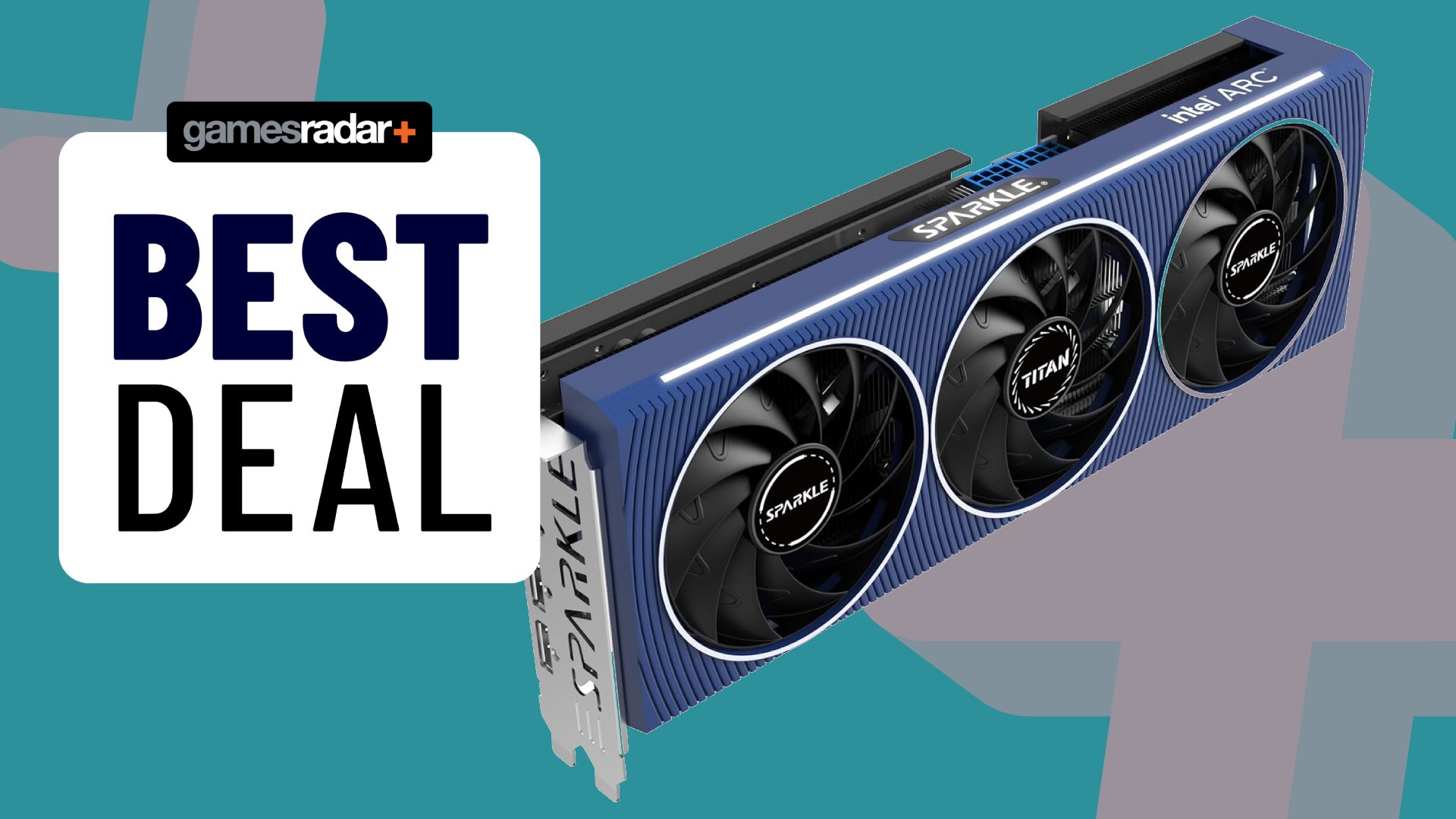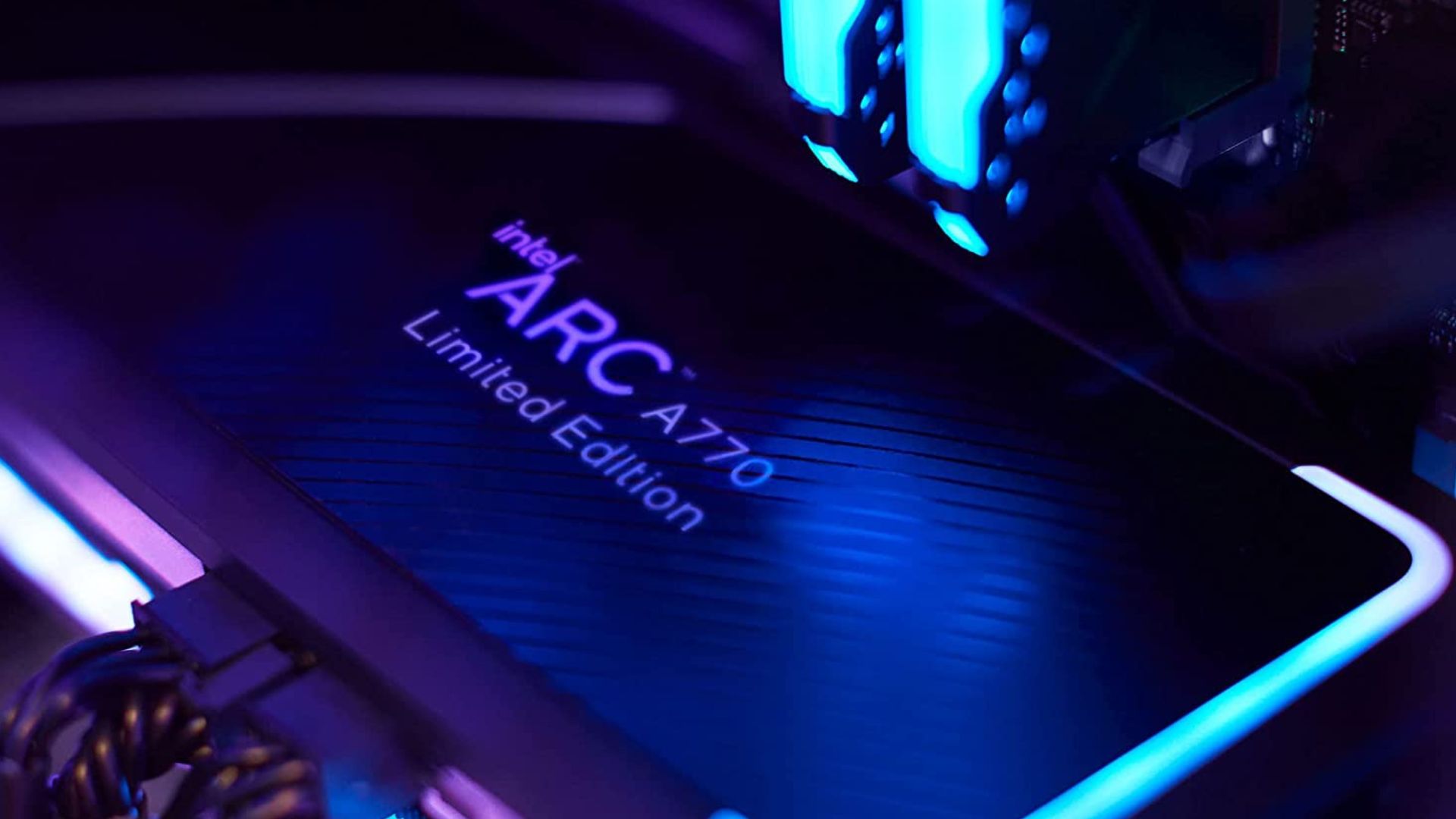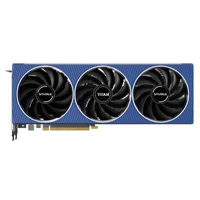For a chunk under $300, I'd give Intel's best graphics card a go
A great 1440p GPU price cut.

Graphics cards rarely dip to under $300 these days, but I just stumbled across an Intel Arc A770 deal that feels worthwhile. Rather than sticking with 8GB VRAM and a GPU that starts to sweat when handling more than 1080p, you can currently grab a 16GB model with a factory overclock for substantially less. Simply put, if you're currently eyeing up entry level Nvidia and AMD cards, you might want to consider this offer instead.
Over at Amazon right now, the Sparkle A770 Titan OC Edition, one of Intel's best graphics card, is down to $269.99 from $319.99. For context, that's the same price featured during last years Black Friday event, so I'm pleased to see the discount show up outside of a sale. Typically, you'll pay around the $300 mark for this same model, and the Acer Predator BiFrost version we reviewed is currently sitting at an icky $399.
The deal means that, for under $300, you're getting 16GB GDDR6 VRAM, 2300 MHz clock speeds, and 4,096 shading units. On paper, that's a chunk more than the RTX 4060 and RX 7600, so you're technically getting better specs for your money. It is worth noting that these raw figures don't exactly translate to better performance in every scenario, as having tested all three of these cards, the A770 doesn't always come up trumps. Still, I think the A770 is well worth its current offer price based on the frame rates it can hit at 1440p and 4K.
Sparkle Intel Arc A770 Titan OC Edition | $319.99 $269.99 at Amazon
Save $50 - Back down to its lowest price since Black Friday, this A770 is currently one of the cheapest 16GB GPUs out there. It also happens to feature a factory overclock, meaning it's even better value than standard versions.
Buy it if:
✅ You’ve got a 1440p PC
✅ You'd prefer 16GB VRAM
✅ You want a factory overclock
Don't buy it if:
❌ You'd rather use Nvidia's AI upscaling
❌ You're looking for 4K performance
Price Check: Newegg $319.99 | Best Buy (out of stock)
Should you buy the Intel Arc A770?

Compared to other graphics cards out there right now, the Intel Arc A770 feels a little bit last gen. That's largely thanks to the fact it's a flagship graphics card that targets 1440p gameplay and uses slower GDDR6 VRAM than more expensive Nvidia and AMD rivals. Yet, despite this, I think the blue team has cleverly cornered a part of the market currently being neglected by those frontrunners, and its Alchemist GPU strikes a price vs performance balance that most players will dig.
In testing, our very own Duncan Robertson found that the Intel Arc A770 was more than capable of hitting 88fps in games like Hitman 3 at 1440p, and it can even reach around 70fps in HUNT: Showdown at 4K. The card does suffer more in challenges like Cyberpunk 2077 with QHD resolutions enabled, but we're talking 55fps versus, which beats the Nvidia GeForce RTX 4060's 46fps average.
Of course, the above is based on native performance, as switching on DLSS using the 4060 results in a phenomenal jump to around 94fps. You will be able to boost performance using Intel XeSS, but the company's upscaler admittedly falls short compared to the green team's AI tricks. Where the A770 will benefit is when trying to handle higher resolution textures in tricky to run games, as its 16GB VRAM futureproofs it better than Nvidia's 8GB offering.
In short, the Arc A770 can't quite keep up with the RTX 4060 when DLSS is involved, but considering Nvidia's card will set you back over $300, it's hard to argue with the value provided by Intel's GPU. If you're really trying to keep upgrading costs to a minimum, or you're building a new system on the cheap, the blue team's Alchemist card is a solid option. So long as you're happy with not getting to mess around with more advanced AI upscaling and new perks like Frame Generation, you'll end up with a card that should age a bit better than its rivals thanks to its 16GB memory.
Looking for more parts? Check out the best gaming CPU and best RAM for gaming. Alternatively, take a peek at the best SSD for gaming if you need a storage boost.
Weekly digests, tales from the communities you love, and more

Phil is the Hardware Editor at GamesRadar and joined the team in 2023. In the past, they've also contributed to the likes of TechRadar, The Daily Star, the BBC, and PCGamesN, but these days, they specialize in testing the latest gaming handhelds, monitors, TVs, and PC components. They're also extremely nerdy about retro consoles and playing the classics on both new and old systems.



